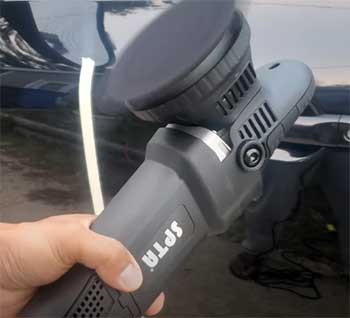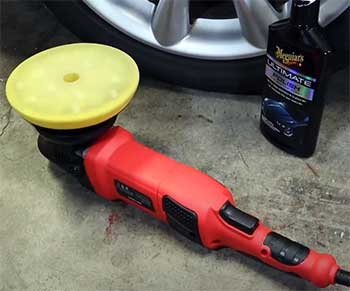If you’re a car enthusiast, you understand the importance of keeping your ride looking its best. A shiny, well-polished car not only looks great, but it also improves the longevity of your paint job. One of the most critical tools for car detailing is a car polisher.
However, there are different sizes and types of polishers, which can make choosing the right one a daunting task. In this article, we’ll dive into the world of 15mm and 21mm car polishers, comparing their pros and cons to help you make an informed decision.
A Brief Comparison Table
| Feature | 15mm Car Polisher | 21mm Car Polisher |
| Type | Dual-action (Random Orbital) | Dual-action (Random Orbital) |
| Throw | 15mm | 21mm |
| Ease of Use | Beginner-friendly | Requires more skill |
| Risk of Damage | Lower | Higher |
| Versatility | High | Moderate |
| Polishing Time | Longer | Faster |
| Aggressiveness | Less | More |
| Suitable for Tight Spaces | Yes | No |
| Ideal for Heavy Oxidation or Deep Scratches | No | Yes |
| Best for | Beginners, occasional users, and general polishing tasks | Professional detailers, experienced users, and heavy paint correction |
The Tale of Two Polishers: 15mm and 21mm
Once upon a time, in a garage not too far away, two car polishers stood side by side, eagerly waiting to be chosen by their next user. These polishers, known as the 15mm and 21mm car polishers, each had their unique features and capabilities.
And so, the journey to find the best car polisher began.
The 15mm Car Polisher

The 15mm car polisher, also known as a dual-action polisher or random orbital polisher, is a popular choice among car enthusiasts and professional detailers.
It works by combining both orbital and rotational movements, ensuring a smooth and swirl-free finish.
This versatile polisher is perfect for removing minor scratches, oxidation, and swirl marks while also providing a high-gloss finish.
Pros of the 15mm Car Polisher
- Easy to use: The 15mm polisher is user-friendly, making it suitable for beginners and experienced users alike.
- Less risk of damage: Its dual-action movement helps prevent paint burns and reduces the risk of damaging your car’s surface.
- Versatility: It’s perfect for various polishing tasks, including paint correction, wax application, and buffing.
Cons of the 15mm Car Polisher
- Longer polishing time: Due to its smaller throw, the 15mm polisher takes longer to cover the same area compared to a 21mm polisher.
- Less aggressive: It may not be as effective on heavily oxidized or deeply scratched surfaces.
Also Read: The Tale of Waxoyl Undercoating.
The 21mm Car Polisher
The 21mm car polisher is a more aggressive version of its 15mm counterpart. It’s also a dual-action polisher but has a larger throw, which means it covers more area in less time.
This feature makes the 21mm polisher a favorite among professional detailers who need to work quickly and efficiently.
Pros of the 21mm Car Polisher
- Faster polishing: Its larger throw allows it to cover more surface area, reducing the time required for polishing tasks.
- More aggressive: The 21mm polisher is more effective at removing heavy oxidation and deep scratches compared to the 15mm polisher.
- Efficient: It’s an excellent choice for professional detailers who need to work on multiple cars in a day.
Cons of the 21mm Car Polisher
- Requires more skill: The 21mm polisher’s aggressiveness means it requires more experience and skill to use without causing damage.
- Not ideal for tight spaces: Its larger throw can make it challenging to work on smaller or hard-to-reach areas.
Analyzing the 15mm and 21mm Car Polishers

Now that we’ve gone over the key features and pros and cons of the 15mm and 21mm car polishers, it’s time to analyze them further to help you decide which one is right for you.
If you’re a beginner or someone who only polishes their car occasionally, the 15mm car polisher may be your best bet.
Its user-friendly nature and lower risk of causing damage make it an ideal choice for those just starting or who don’t want to risk harming their vehicle.
However, if you need a more aggressive polisher for heavy oxidation or deep scratches, the 21mm polisher could be a better fit.
For professional detailers who need to work on multiple cars in a day or those who want to save time, the 21mm car polisher’s larger throw and faster polishing capabilities will come in handy.
Just keep in mind that it requires more skill and may not be the best option for tight spaces.
Finding the Perfect Polisher: A Summary
In conclusion, both the 15mm and 21mm car polishers have their unique features, advantages, and disadvantages. To decide which one is best for you, consider the following factors:
- Your skill level: Beginners and occasional users may prefer the 15mm polisher, while more experienced users may opt for the 21mm polisher.
- Your polishing needs: If you’re dealing with heavy oxidation or deep scratches, the 21mm polisher may be more effective. For general polishing tasks, the 15mm polisher is versatile and user-friendly.
- Time efficiency: If you need to work quickly and efficiently, the larger throw of the 21mm polisher will save you time.
- Working in tight spaces: The 15mm polisher may be a better choice for smaller or hard-to-reach areas due to its smaller throw.
Frequently Asked Questions (FAQ)
The best size car polisher depends on your specific needs, skill level, and the type of polishing tasks you plan to perform. For beginners and occasional users, a 15mm polisher may be more suitable. On the other hand, professional detailers or those who need a more aggressive polisher might prefer a 21mm polisher.
The most common polisher size is the 15mm car polisher. Its user-friendly nature, versatility, and lower risk of causing damage make it a popular choice among car enthusiasts and professional detailers alike.
An 8mm polisher has a smaller throw compared to a 15mm polisher. This means the 8mm polisher covers less area per rotation, making it suitable for more delicate tasks or smaller surfaces. The 15mm polisher, with its larger throw, is more versatile and ideal for various polishing tasks on larger surfaces.
The best speed for a car polisher depends on the task you’re performing and the type of car polisher you’re using. In general, lower speeds (1,000-2,500 RPM) are suitable for applying wax or sealants, while medium speeds (2,500-4,000 RPM) are appropriate for light polishing tasks. For heavy paint correction, higher speeds (4,000-6,000 RPM) may be required. Always refer to the manufacturer’s recommendations for optimal speed settings.
There are three main types of car polishers: rotary, dual-action (random orbital), and forced rotation dual-action. Each has its advantages and disadvantages:
Rotary polishers: These are powerful and fast but require more skill to use without causing damage.
Dual-action polishers: These are user-friendly and versatile, making them a popular choice for both beginners and experienced users.
Forced rotation dual-action polishers: These combine the best of rotary and dual-action polishers, offering increased cutting power while maintaining the user-friendly nature of a dual-action polisher.
Choosing the best type of car polisher depends on your skill level, the tasks you plan to perform, and your personal preferences.
Also Read: Pros And Cons of EcoRVPro Exterior Shield.
Final Thoughts
Ultimately, the best car polisher for you will depend on your specific needs, preferences, and polishing tasks. By carefully considering the pros and cons of both the 15mm and 21mm car polishers, you’ll be well-equipped to make an informed decision and keep your car looking it’s absolute best.
So, as the sun sets in the world of car detailing, the 15mm and 21mm car polishers continue to stand side by side, ready to assist you in your quest for the perfect shine.
Whichever you choose, know that with the right polisher, technique, and dedication, you’ll be able to transform your vehicle’s appearance and protect its paint for years to come.



